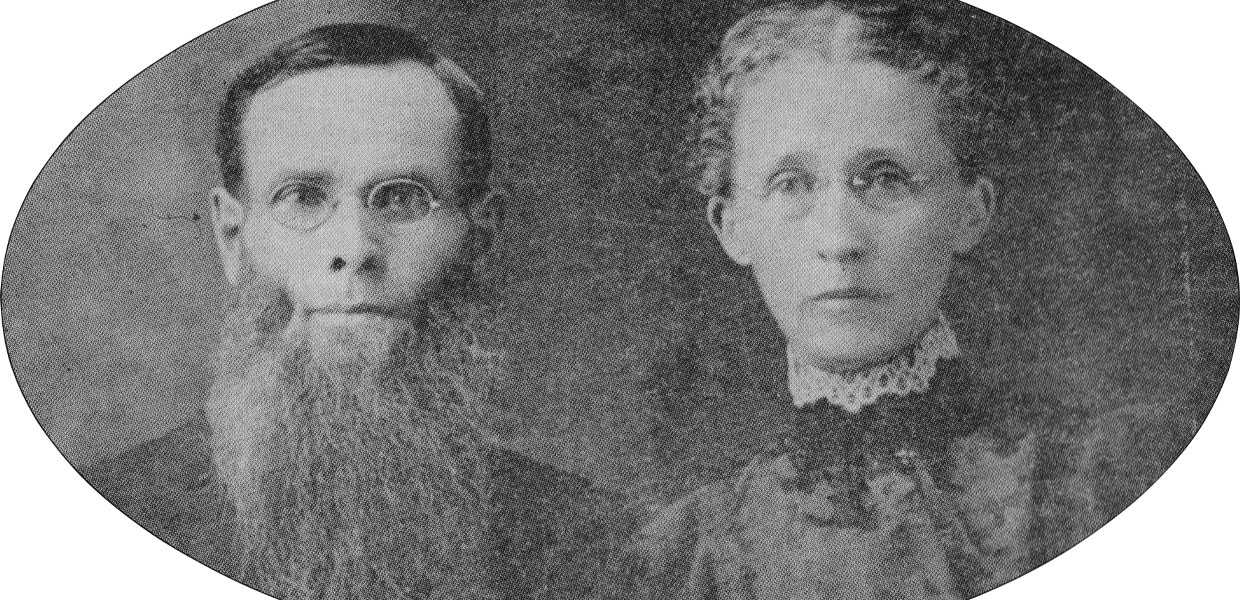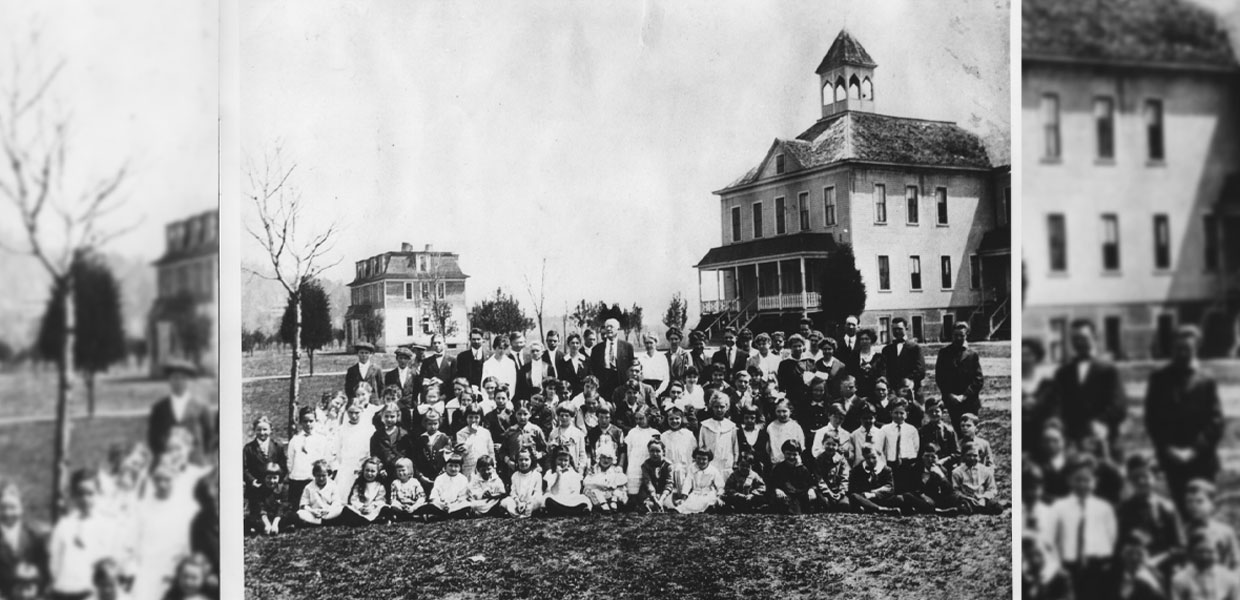


R. Steven Norman III
Seventh-day Adventist Christians hold beliefs and a worldview that are distinctively Bible-based. Because of this we have felt that our children should attend schools that teach those same distinctive Bible truths. Just as denominations differ in beliefs, schools also have different belief systems.
Seventh-day Adventist schools teach the Adventist worldview, which accepts the Bible as the standard by which everything else is measured. This biblical worldview embraces four concepts: “Creation—What is God’s intention?, Fall—How has God’s purpose been distorted?, Redemption—How does God want us to respond?, and Re-creation—How can we be restored in the image of God?”1 From the very beginning, Adventist education has understood that the “work of education and the work of redemption are one,”2 and that its ultimate goal is to transform teachers and students alike so they reflect the image of Christ.
Beginning in the 1800s, a common theme from the pen of inspiration was the importance of training for the service of Christ. In 1903 Ellen White wrote, “True education means more than the pursual of a certain course of study. It means more than a preparation for the life that now is. It has to do with the whole being, and with the whole period of existence possible to man. It is the harmonious development of the physical, the mental, and the spiritual powers. It prepares the student for the joy of service in this world and for the higher joy of wider service in the world to come.”3 What better way is there to reflect Christ than through a life of service?
1800s
In 1888 Mrs. White "spoke in positive terms of the importance of an energetic effort for the establishment of church schools;" then, in 1890 a school was opened in Louisville, Kentucky. It was the first school to open in the territory that would later become South Central Conference.4 In 1891 the General Conference called Mr. and Mrs. G. W. Colcord to leave the educational work they had established at Milton Academy (forerunner of Walla Walla) and come at their own expense to open a school at Graysville, Tennessee. For a classroom, Colcord rented a room above a general store. The school opened in 1892 with 23 students, each paying $4 per month tuition.5 The Graysville School became the forerunner of Southern Adventist University, whose mission is to equip students to embrace biblical truth, embody academic and professional excellence, and pursue spirit-filled lives of service.
In 1892, a company of believers opened a school in Springfield, Tennessee. The first Adventist school in Florida began in Terra Ceia. Mrs. L. T. Crisler was probably the first teacher. The next year, 1893, a school was started at Eustis, Florida, and then in 1895 in Punta Gorda, Florida. In 1895, a night school and then a day school for African-Americans opened on the ship The Morning Star at Vicksburg, Mississippi, for about 150 students. The teachers were James Edson White, and his wife, Emma, along with a few others. It was the first Adventist school in Mississippi.6
In 1896 Oakwood Industrial School, located on the site of a 380-acre former slave plantation in Huntsville, Alabama, opened its doors on November 16, with 16 students. Solon M. Jacobs of Fontanelle, Iowa, served as the first principal. In harmony “with the SDA philosophy of education, the school aimed to develop the total man, so that he might understand the true values of life and his proper relationship and duty toward his God and his fellow men, and to teach the students how to think and act for themselves, to master circumstances, to develop breadth of mind and clearness of thought.”7 The Oakwood Industrial School became the forerunner of Oakwood University, whose mission is to transform students through biblically-based education for service to God and humanity, and whose motto is “Enter to Learn, Depart to Serve.”
1900s
In 1904, acting on their convictions to educate and evangelize the South, Ellen G. White, Percy T. Magan, and E. A. Sutherland boarded Edson White’s river steamer, The Morning Star, on the Cumberland River near Nashville, Tennessee. Under Mrs. White’s visionary leadership, they purchased the Nelson Farm in Madison, Tennessee, and in 1906 the Nashville Agricultural and Normal Institute opened its doors. The school was founded to train home and foreign missionary teachers, and soon after its establishment began sending out self-supporting workers. The Nashville Agricultural and Normal Institute became the forerunner of Madison Academy that equips students to be “Inspired Seekers, Empowered Scholars, and Devoted Servants.”
In the years that followed, nearly 40 small Madison “units,” which included schools and sanitariums, were started. Both self-supporting and conference-operated schools that began as “little Madisons” still are in existence today. These include Fletcher Academy, Harbert Hills Academy, Heritage Academy, Laurelbrook Academy, Highland Academy, Mt. Pisgah Academy, and Georgia-Cumberland Academy.8
Also in the early 1900s, the Southern and Southeastern Unions of Seventh-day Adventists engaged Anna Knight (a former school teacher and nurse) to coordinate Black Adventist educational work in the South. As a result of her efforts to raise the consciousness of Adventists regarding the state of Black Adventist schools and her work in standardizing curricula, Black Seventh-day Adventist schools were opened in several southern cities. Included among these schools was the elementary school in the Nashville area. The forerunner of F. H. Jenkins was the Nashville Mission School which started in the home of Anna M. Nicholas, but formally opened in the fall of 1905.9 During the 20th century, Adventist teachers throughout the Southern Union continued working to accomplish the mission of preparing students for the joy of service. Enrollment grew from 854 pupils in 1902 to 11,422 in 1999, and from 30 to 219 elementary and secondary schools.10
Perhaps one of the most exciting things that happened in January of 1990 was the adoption of a K-16 educational system by the Southern Union Conference Executive Committee. This action established the first kindergarten through college education system in the North American Division.11 Then, just before the close of the decade, an associate director for early childhood education position was established, along with the development of an organized approach to operating child development centers. This expanded the education system to include birth-16, and enabled the Southern Union to be in harmony with 1904 counsel to the Church to provide for the training of younger children in situations where parents work out of the home and/or find themselves lacking in parental skills. (See Sanitarium Church School Board Minutes of January 14, 1904; “Counsel on Early School Attendance,” Review and Herald, April 24, 1975.)
With the 20th century coming to a close, launching the school system into the age of high technology became a priority. Preparation for a 21st century education included promoting the purchase and use of computers, educating teachers and students in the use of classroom technology, developing curriculum tools to assist instruction, and exploring options for technology-based distance education.
2000s
The early 2000s saw the establishment and development of the Adventist EDGE, a Southern Union initiative for continuous improvement aligned with the North American Division Journey to Excellence. In order to provide GREAT education, the following organizational goals were identified:
God-centered — Integrate Seventh-day Adventist Christian principles with learning to anchor students in a relationship with God and prepare them for a joyful life of service.
Results-oriented — Establish measurable objectives, then monitor and assess results to ensure that student performance and teacher expertise is cultivated to the highest possible level.
Environment that is Safe and Nurturing — With the teacher as a servant-leader/coach, create an environment where students master relevant and meaningful concepts, individual learning needs are met through student-centered teaching strategies in a collaborative atmosphere, diversity is celebrated through respect for other’s differences and uniqueness, and plans are implemented to ensure the safety and security of students, faculty, staff, and visitors.
Aligned with Adventist and National Standards — Implement Adventist and national standards which identify the high expectations of what students should know and be able to do to attain academic, spiritual, physical, and social-emotional success.
Team Effort — Foster collaboration among all stakeholders — parents, teachers, college and university educators, administrators, board members, pastors, and church members — to develop, promote, and maintain a successful education program that equips students to excel in faith, learning, and service.
In 2019, a strategic growth planning committee consisting of educators from all levels birth-16, pastors, conference administrators, and conference and union education leaders, set as a priority the need to recruit, develop, and retain high quality, talented, and engaged educators. The goal was to attract more teachers and to be intentional about creating a culture of growth and support as teachers work to fulfill the mission of the Master Teacher. A first step was to develop a rubric that sets standards and norms for what talent, energy, and engagement looks like. Across the Union, teachers have helped refine the rubric so that it adequately describes a joyful, passionate, collaborative, professional, learner and disciple who is a story for Jesus in words and actions.
In order to attract young people to the ministry of teaching, the Teacher in Training Scholarship has been established. Its purpose is to provide scholarship funding for qualified students graduating from a Southern Union academy who desire to become a teacher in a Seventh-day Adventist school, and who subsequently enroll at an Adventist college or university. Over a four-year period, a student may be awarded up to $8,000 if annual funding requirements are met.
The Future of Adventist Education
To follow Jesus’ example of selfless service, students over the years have engaged in outreach and numerous service and mission projects to help others at home and abroad. As they build churches and schools, feed the homeless, help the elderly with yard work, serve on disaster relief teams, or perform other acts of kindness, they serve as the hands and feet of Jesus, reflecting His image. As they matriculate through the Adventist school system, they learn to develop a life of faith in God, and to use their knowledge, skills, and understandings to serve God and humanity. The ultimate aim of this training is to prepare students to enroll in the school of the hereafter where they will sit at the feet of the Master Teacher, where “all the treasures of the universe will be open to the study of God’s children.” 12
1 North American Division Office of Education, Journey to Excellence through Curriculum: Mapping the Core of Adventist Curriculum, 2011.
2 Ellen White, Education, p. 30.
3 Ibid, p.13.
4 Walton J. Brown, Chronology of Seventh-day Adventist Education, Washington, D.C., Department of Education, General Conference of Seventh-day Adventists, 1972.
5 Seventh-day Adventist Encyclopedia, pp. 1394-1395.
6 Walton J. Brown, Chronology of Seventh-day Adventist Education, Washington, D.C., Department of Education, General Conference of Seventh-day Adventists, 1972.
7 Seventh-day Adventist Encyclopedia, Revised Edition. Review and Herald Publishing Association. Washington, DC, 1976.
8 Ibid
9 The Gospel Herald, February 1906, p. 7.
10 General Conference Bulletin, April 9, 1903, p. 1ff.
11 Southern Tidings, v. 85, no. 9.
12 Ellen White, Education, p. 307.
is the recently retired director of education at the Southern Union Conference.
Southern Union | August 2021



Comments are closed.